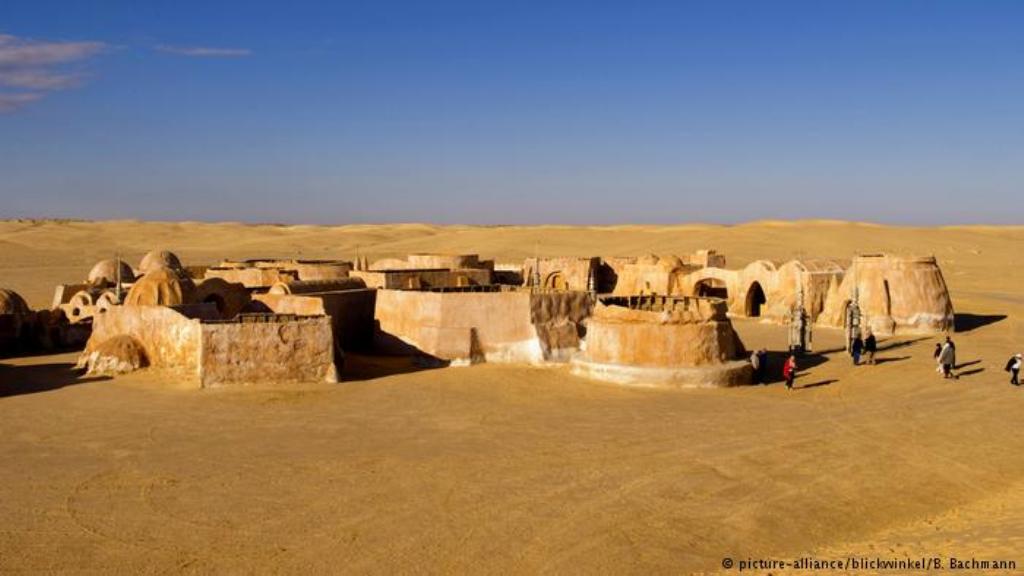Reviving the Tunisian tourism industry: Calling on the force

Luke Skywalker is said to have been raised on a non-arable desert planet, beneath two suns, in a landscape formed by heat, sand and dust.
On the edge of the Sahara, Star Wars director George Lucas found his dream film location and named the film planet after the Tunisian village he discovered there: Tatouine – or Tatooine. More than 40 years ago, the film team set up shop in Tunisia and soon started filming in a variety of locations.
Ong Jmel lies in the southwest of Tunisia. To Star Wars fans, the location is better known as Mos Espa, the galaxy waystation where all the gloomy figures gather. It's where Luke Skywalker got to know the smuggler Han Solo, with whom he would embark on his adventures. It's also where Luke's father, Anakin Skywalker – who later became Darth Vader – was born.
There's also the small village of Matmata, where Luke Skywalker was raised by his uncle and aunt. The house in the film is actually a hotel which was constructed in such a way as to remain cool in the desert heat – namely, underground.
In the Sidi Driss hotel, tourists can still discover film props and signs of the action, such as switchboards left in the wall. Yellowing posters and photos of the film crew are hung on the wall.Both locations are pilgrimage destinations for Star Wars fans.
Engulfed by the sand
You might think that tourism here would be booming; Star Wars has millions of fans around the world. After all, who wouldn′t relish the prospect of slipping into a Jedi knight costume and setting foot where Luke Skywalker himself once trod?
For many years, that was the case. Then terrorism came to Tunisia and the tourists stayed at home. The town of Mos Espa – a collection of buildings made of wood and papier-mache – were engulfed by the desert sand.
Save Mos Espa, a 2014 initiative by fans, collected donations in excess of $75,000 for the project, a sum handed over to the Tunisian government. Mos Espa was dug out of the sand.
Nevertheless, tourists are still staying away, preferring the sandy beaches in the north of the country to a nearly 500 kilometre drive to catch a glimpse of George Lucas's desert planet in Tunisia′s arid south.[embed:render:embedded:node:28697]Asian tourist potential
Loyal fans have not given up, however. Nabil Gasmi of the regional tourism organisation CDTOS is continuing work to protect the film set from being forgotten: "We have to. Everyone here in the area profits from the film set and sees it as a part of their inheritance."
He dreams of turning the region into a tourist magnet – complete with convenience store, museum, film screenings and festivals. The idea is to get as many locals involved as possible, since unemployment, especially among the young, is rife.
In March 2017, the concept was launched at the International Tourism Exchange (ITB) trade fair in Berlin by a delegation of Tunisian tourism managers. They are particularly hoping to attract the interest of tourists from across Asia, as a new wave of adventurous consumers begins travelling the globe in search of the choicest destinations. Indeed, the desert of southern Tunisia could yet prove a goldmine.
Silke Wunsch
© Deutsche Welle 2017
